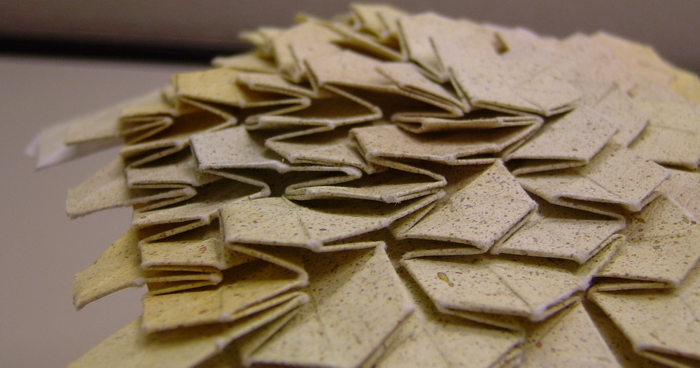I was recently inspired to write a poem after participating in a meeting with our Downtown Development Association and Doug Griffiths, author of 13 Ways to Kill a Community. We were discussing change challenges and how to deal with detractors and resistors to proposals aimed at transforming our seasonal community to one in which there is a chance for sustainable growth. In the discussion, a metaphor emerged of the river and the rocks.
This metaphor rings true not only at local levels, but also nationally and globally. It raises the question, “how do you get a minority of the population to engage collaboratively in constructive change?” In our community, most resistance to change initiatives comes from a very small minority. At a national level, we are more rigidly polarized, but it’s still the same issue: what’s the best way to overcome resistance from a minority of the population who don’t want to give up their privileged status or positions of power – or just change the “the way things have always been around here.” Here’s the poem.
The River and the Rocks
Rivers come from sources big and small
They ramble and rush as they rise and fall
Rivers shine brightly as they slowly flow
Crystal clear waters twinkle and glow
The water playfully dances as it weaves its way
It tumbles and glistens throughout the day
The waves grow fierce as the water trembles
And then calm down like a stream it resembles
As the river finds its way to the sea
It rushes and races over rocks and debris
It makes its way past boulders and stones
And sings its song in melodious tones
The river whispers and roars as it changes pace
But it never forgets the end goal of the race
The river never stands still – night or day
welcoming stars and moon to reflect and play
The river flows and knows the moment won’t last
It lives in the now and the future, not in the past
When rocks block its path or get in its way
It simply trickles around them hearing their say
The river welcomes the rocks to create a rapid
And realizes the resistance is really quite vapid
The rocks are content to secure their place
But the river won’t allow them to alter its pace.
The Mississippi begins in a neighboring state
After thousands of miles, the Gulf is its fate
The Nile River begins just south of the Equator
And ends in the Mediterranean four thousand miles later
The Tigris and Euphrates join together in Turkey
Wind their way through Syria and end up quite murky.
Our own Au Sable forms in Crawford County
It flows through Grayling offering trout as its bounty.
All rivers have rocks to alter their flow
But a strong river will continue to grow
The rocks may slow it down and change its course
But it brings its drops together as a mighty force
The River thanks the rocks and respects their position
It still flows by them as it slows down to listen
The River will always have a better story to tell
Though the story never ends, all will be well.
To me, this poem communicates some of the challenges of change. It reflects the fact that change is rarely a straight line – it requires us to bend and twist as needed to reach our final destination. Also, effective change initiatives take into consideration different viewpoints and elevated perspectives. Finally, successful change only happens when the current is strong enough to overcome the obstacles it will inevitably face along its journey. Even if the process and the results are little murkier than intended, the point is to achieve the desired outcome. And, critically, people have to agree that the outcome is worth all the investment and hassles that the changes may require. Not all changes are necessary or good.
Perhaps more importantly, no matter how hostile conditions may be, we can still shine and sparkle in the flow of change. We can playfully dance as the current grows and the rocks get bigger. Depending on the situation, we can fiercely roar or calmly know. We can sing our way through and keep our glow no matter what gets in our way. And, to be clear, let’s not forget that change always starts when we look into the river for our own reflection.
A popular book on change asks the question: “Who Moved the Cheese?” This poem asks the question: “Who threw in the rocks . . . . and Why?”
After reflecting on our discussion, I summarized three points that may be relevant to communities big and small:
- Create compelling narratives. We are living in a world of competing narratives. She who creates the most compelling narrative has the best chance to grow. Unfortunately, facts now matter less than stories. The truth is, however, that if we want to build community we need to sharpen our narrative AND bring together minority and majority opinions behind a common vision. In our community, the minority prefers to keep things the way they have always been. A majority believes change is necessary to survive and thrive. It is incumbent on the majority to craft a story that inspires people from all perspectives to jump into the river of support and make it a mighty force. Those who wish to hold on to the present, those who wish to revisit the past, and those who want to charge into the future must talk, work together respectfully, and try to understand each other.
- Respect different points of view. Even though we may violently disagree, it’s critical to listen for whatever may have some legitimacy or merit in the opposition story. Also, we can disagree in a respectful and straightforward way so that we don’t give the opposition ammunition to enhance their stories. In our community, the minority usually rallies the opposition behind the flags of responsible government and transparent communication. Both of these flags are legitimate banners. The challenge for the majority is to make sure we craft a convincing story, we have our facts straight, we listen to whatever legitimate claims arise, and we don’t let the rocks become a dam.
- Be careful about what gets reinforced. We have to be very mindful of what behaviors we are reinforcing – or not – and how we go about doing that. In our community, we tend to give oxygen to the opposition by using inflammatory language and reacting to their charges in a contentious tone which not only increases the toxicity but also attracts the media prowling around for sensational headlines or front-page stories. By so doing, we create more rocks and reduce our chances of having them become part of the solution over time. Ideally, the rocks and the river form an interdependent relationship. The river wins by feeling the excitement of rapids the rocks create. The rocks win by feeling continually cooled by the rushing waters.
On a personal note, I see my daughter employing all three of these steps as she raises her nine-year-old twins. You can imagine the different points of view that arise constantly on a daily basis. She often faces competing narratives on what happened to cause a ruckus. She respectfully listens to all sides. She then thinks very carefully about what the appropriate reinforcement contingencies should be to find a peaceful way forward.
I’m hoping in our community that we can fill the river with enough “drops” of support to be able to flow past the rocks and find innovative ways to grow our community. I’m also hoping, on a broader scale, that governments around the world can create the right narratives, respect differences, and reward the behaviors required to end the slide away from democracy. May it be so.
Also published on Medium.



